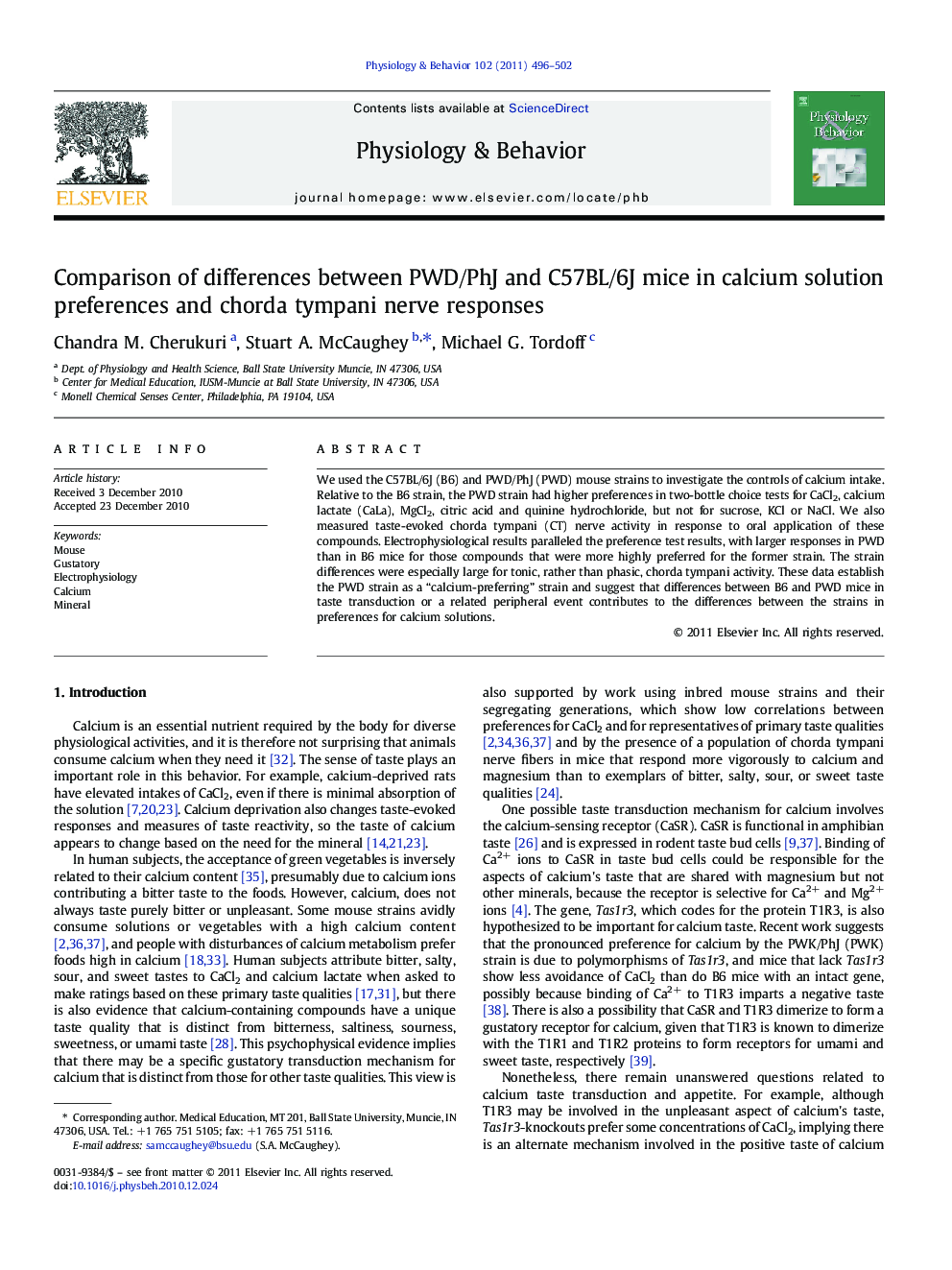| Article ID | Journal | Published Year | Pages | File Type |
|---|---|---|---|---|
| 5925675 | Physiology & Behavior | 2011 | 7 Pages |
We used the C57BL/6J (B6) and PWD/PhJ (PWD) mouse strains to investigate the controls of calcium intake. Relative to the B6 strain, the PWD strain had higher preferences in two-bottle choice tests for CaCl2, calcium lactate (CaLa), MgCl2, citric acid and quinine hydrochloride, but not for sucrose, KCl or NaCl. We also measured taste-evoked chorda tympani (CT) nerve activity in response to oral application of these compounds. Electrophysiological results paralleled the preference test results, with larger responses in PWD than in B6 mice for those compounds that were more highly preferred for the former strain. The strain differences were especially large for tonic, rather than phasic, chorda tympani activity. These data establish the PWD strain as a “calcium-preferring” strain and suggest that differences between B6 and PWD mice in taste transduction or a related peripheral event contributes to the differences between the strains in preferences for calcium solutions.
Research Highlights⺠PWD/PhJ mice preferred calcium solutions more highly than did C57BL/6J mice. ⺠These higher preferences were accompanied by larger chorda tympani nerve responses. ⺠Strain differences in neural responses were especially large during the tonic period.
